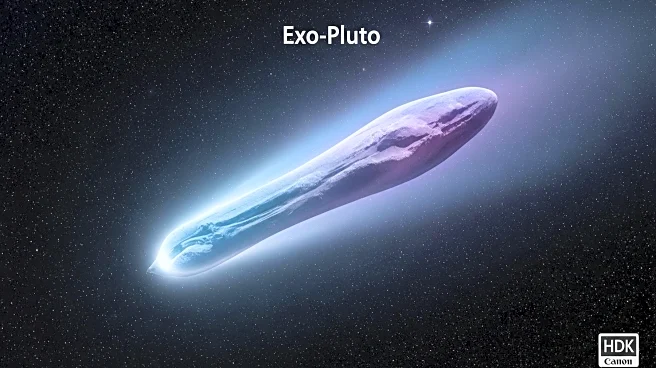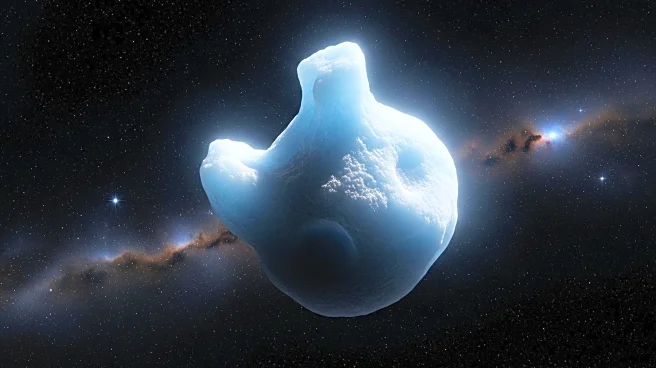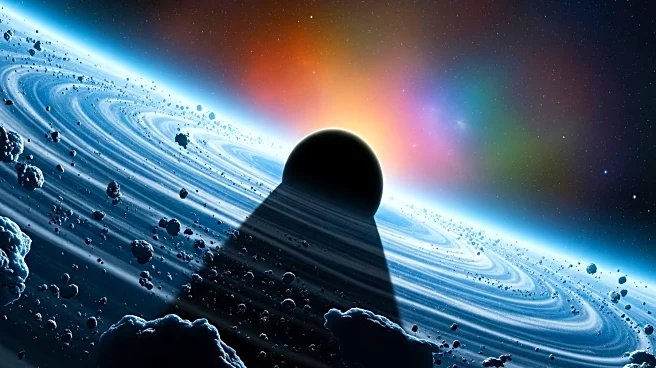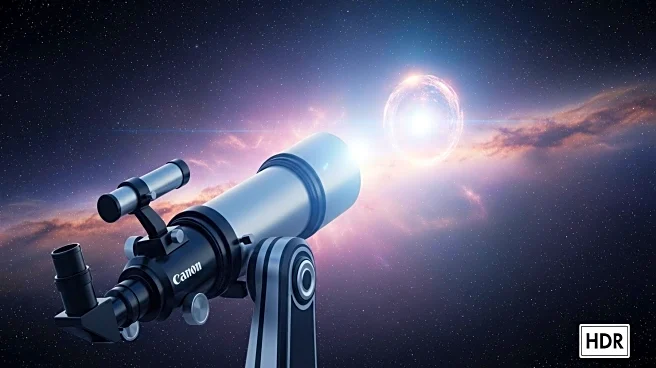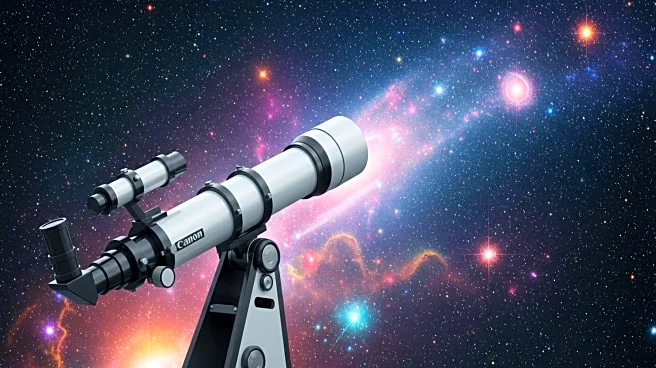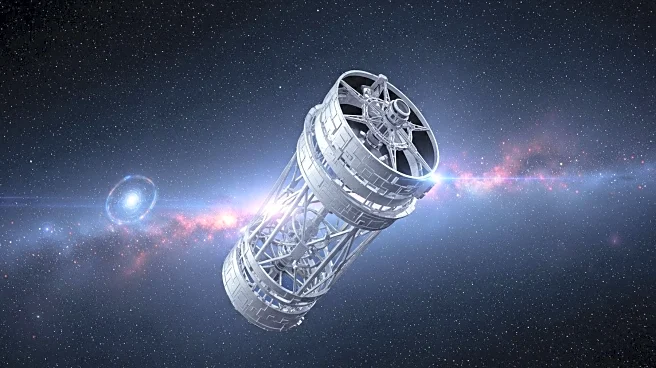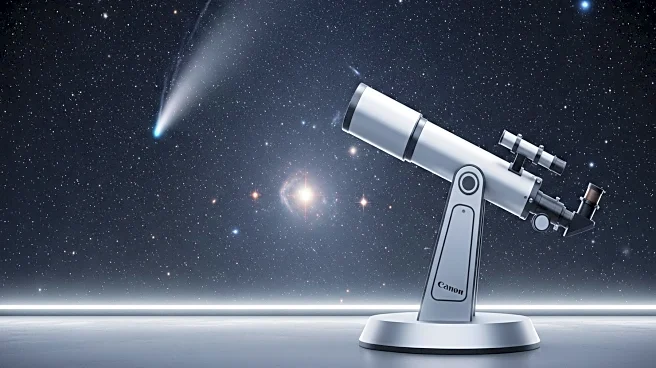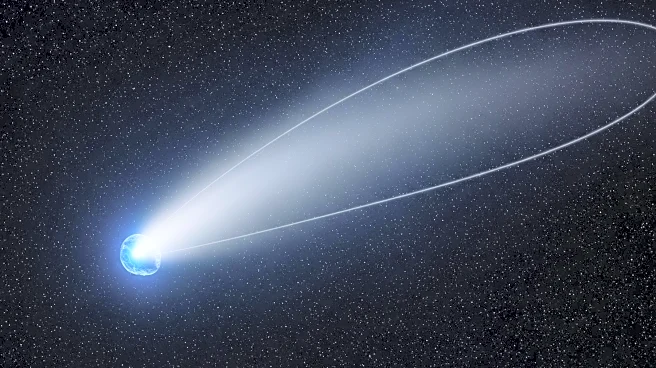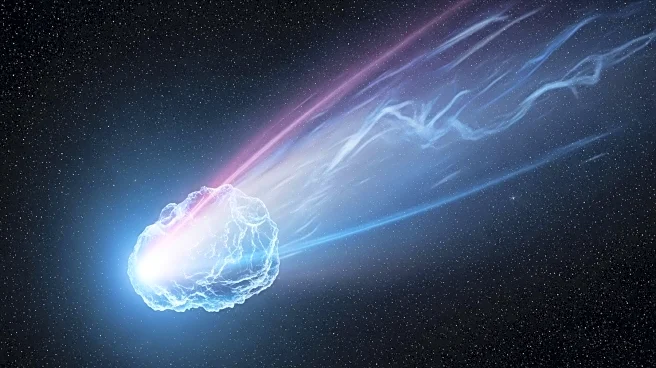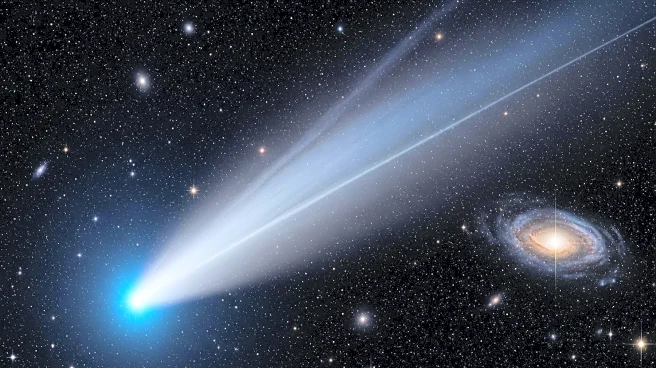What is the story about?
What's Happening?
Recent research has reclassified the interstellar object 'Oumuamua, first observed in 2017, as a fragment of an icy exoplanet, specifically an 'exo-Pluto'. Initially thought to be a comet from another star system, 'Oumuamua is now believed to be composed almost entirely of nitrogen ice, similar to the surface of Pluto. This discovery was presented by Steve Desch, an exoplanet researcher at Arizona State University, at a conference in Maryland. Unlike typical comets, 'Oumuamua is elongated and nitrogen-rich, distinguishing it from other interstellar visitors like Comets 2I/Borisov and 3I/ATLAS. The findings suggest that fragments of Pluto-like objects are more common than previously thought, potentially altering our understanding of material ejected from the solar system.
Why It's Important?
The reclassification of 'Oumuamua as an 'exo-Pluto' has significant implications for astronomy and our understanding of interstellar objects. It suggests that fragments of icy exoplanets are more prevalent in space than previously assumed, which could lead to a reevaluation of how material is ejected from solar systems. This discovery may impact future research on the composition and behavior of interstellar objects, providing insights into the formation and evolution of planetary systems. The findings could also influence the search for similar objects, potentially expanding our knowledge of the universe's structure and the distribution of planetary materials.
What's Next?
Astronomers are expected to continue searching for interstellar objects similar to 'Oumuamua using advanced surveys like Pan-STARRS, ATLAS, and the Vera Rubin Observatory. These efforts aim to identify more 'exo-Pluto' fragments, which could offer further insights into the composition of distant planetary systems. The ongoing study of these objects may enhance our understanding of the outermost dwarf planets and the processes that lead to their ejection into interstellar space. Researchers anticipate that more observations will help refine models of planetary formation and the dynamics of solar systems.
Beyond the Headlines
The discovery of 'Oumuamua as an 'exo-Pluto' raises questions about the prevalence of nitrogen-rich bodies in space and their role in the cosmic ecosystem. It challenges existing theories about the composition of interstellar objects and suggests a need for revised models of planetary ejection and formation. This finding may also prompt ethical considerations regarding the exploration and study of interstellar materials, as scientists seek to balance curiosity with the potential impacts of space research.
AI Generated Content
Do you find this article useful?
